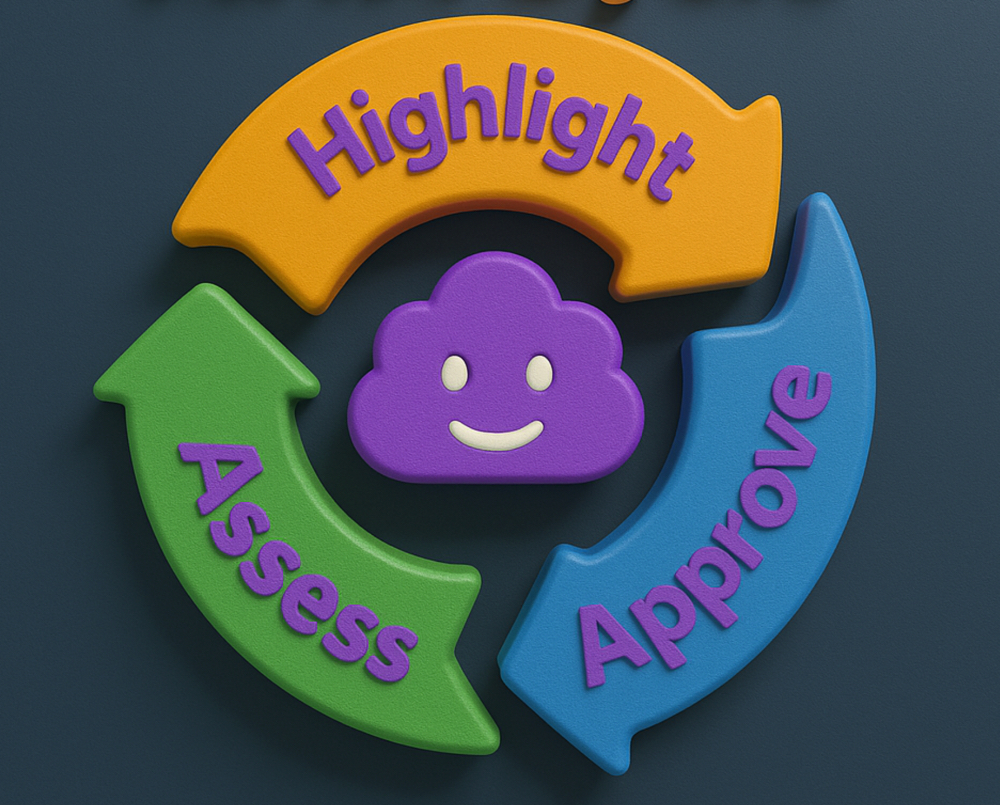Over the past year, Cursor has completely replaced my use of VS Code. I’ve also explored AI tools like Windsurf and Autopilot. While optimizing legacy systems and accelerating product iterations, I was inspired by my former colleague Woody Zuill’s Approval Testing method. Drawing from that and my own experiences, I’ve developed a practical process called AHA. By combining AI’s analytical and design capabilities with log-driven development and incremental validation, AHA offers a structured and controllable approach to AI-assisted coding.
AHA’s Core Steps
AHA consists of three key stages: Assess, Highlight, Approve. Here’s the breakdown:
🧪 1. Assess: Evaluate the Code’s Current State
The goal is to establish a baseline for behavior, avoiding blind changes.
- Use AI tools (e.g., Cursor) and their intelligent analysis to add detailed trace logs
- Run the system, capture logs, and record the current behavior as a baseline
This step harnesses AI’s analysis power to boost code observability and precisely capture runtime logic.
🔦 2. Highlight: Analyze Change Needs
Using the baseline logs, define business goals or optimization needs, and rely on AI’s intelligent design capabilities for code change suggestions.
- Review code differences (diff) to assess the impact of changes
- Compare logs to verify if behavior aligns with expectations
Here, AI acts as a pair programming partner, combining analysis and design skills to offer precise suggestions, with developers handling review and refinement.
✅ 3. Approve: Validate and Confirm
Confirm the effect of changes via log comparison:
- ✅ If behavior meets goals: approve the change and commit it as the new baseline
- ❌ If there’s a deviation: feed logs back to AI, iterate, and return to the Highlight step
Once validated, leverage AI’s intelligent generation to produce unit tests or documentation, enhancing code maintainability.
🛠 AHA Workflow in Detail
- Prompt AI (e.g., Cursor) to add detailed trace logs to the target function
- Run the system, generate baseline logs, and record initial behavior
- Describe optimization goals to AI, tapping its intelligent design for code change suggestions
- Review the code diff and refine any issues
- Rerun the system and generate new logs
- Compare baseline and new logs:
- ❌ Inconsistent? Feed logs to AI for analysis, iterate, and optimize
- ✅ Consistent? Confirm changes, request AI-generated tests or docs
- Commit changes to Git as the new baseline, then tackle the next function
✨ Where AHA Shines
AHA excels in these scenarios:
- Legacy system refactoring: When documentation or tests are missing, careful behavior verification is essential.
- Rapid product iteration: Ensures that code changes align with business requirements.
- Performance optimization: Time-based logs help quickly identify performance bottlenecks.
- Implementation of complex features: Enables gradual evolution through iterative steps, well-suited for agile teams that prefer small, incremental commits.
✅ Summary
AHA (Assess, Highlight, Approve) is a structured development method, blending log-driven observability, AI’s intelligent analysis and design capabilities, and Approval Testing’s validation logic. With tools like Cursor, AI becomes a powerful pair programming partner, helping developers optimize complex systems in controlled, incremental steps.

